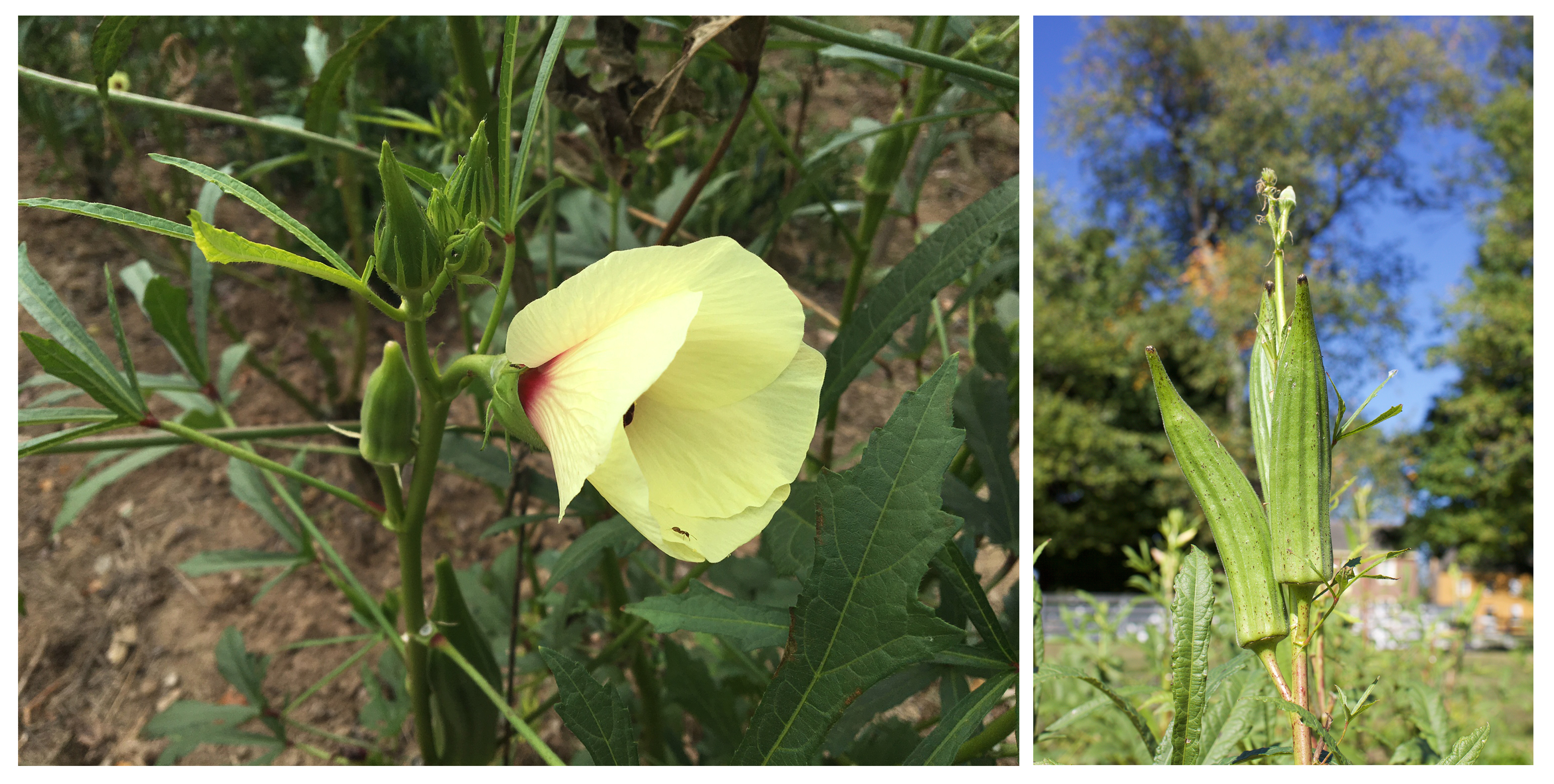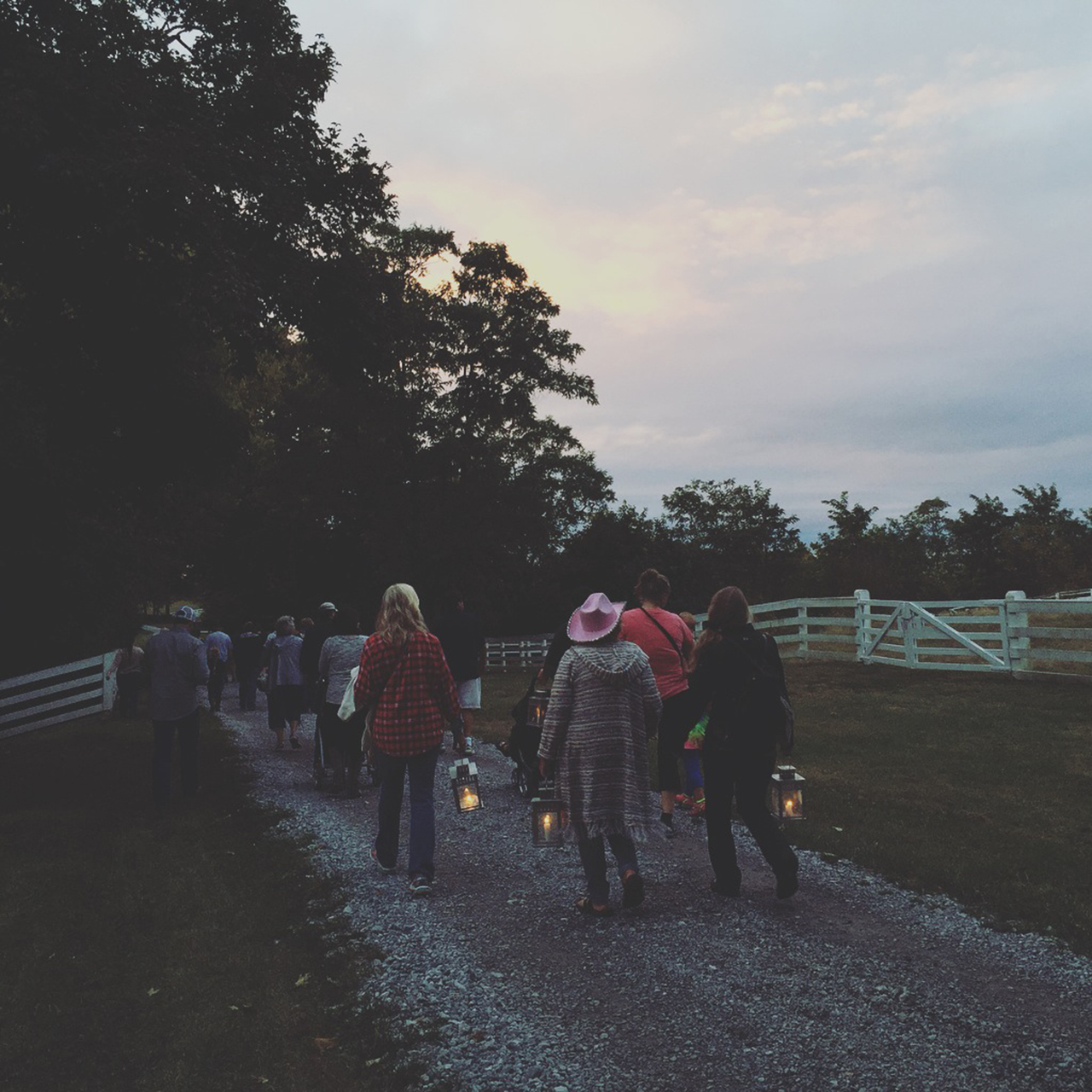What do you know about sorghum? Enjoying sticky sorghum over warm, buttered cornbread is kind of like satiating Kentucky’s first sweet tooth. The crop has strong roots in Kentucky’s history, known for its value even outside of desserts. There are four major types of sorghum: grain, forage, biomass and sweet. Sorghum grain can be used as a gluten free flour alternative for baking, and it can even be popped like popcorn. Some sorghum varieties are used as pasture forage or silage for livestock feed. It’s also one of the primary ingredients in ethanol. Kentucky is among the nation’s primary producers of sweet sorghum, used to make the highly coveted sorghum syrup.
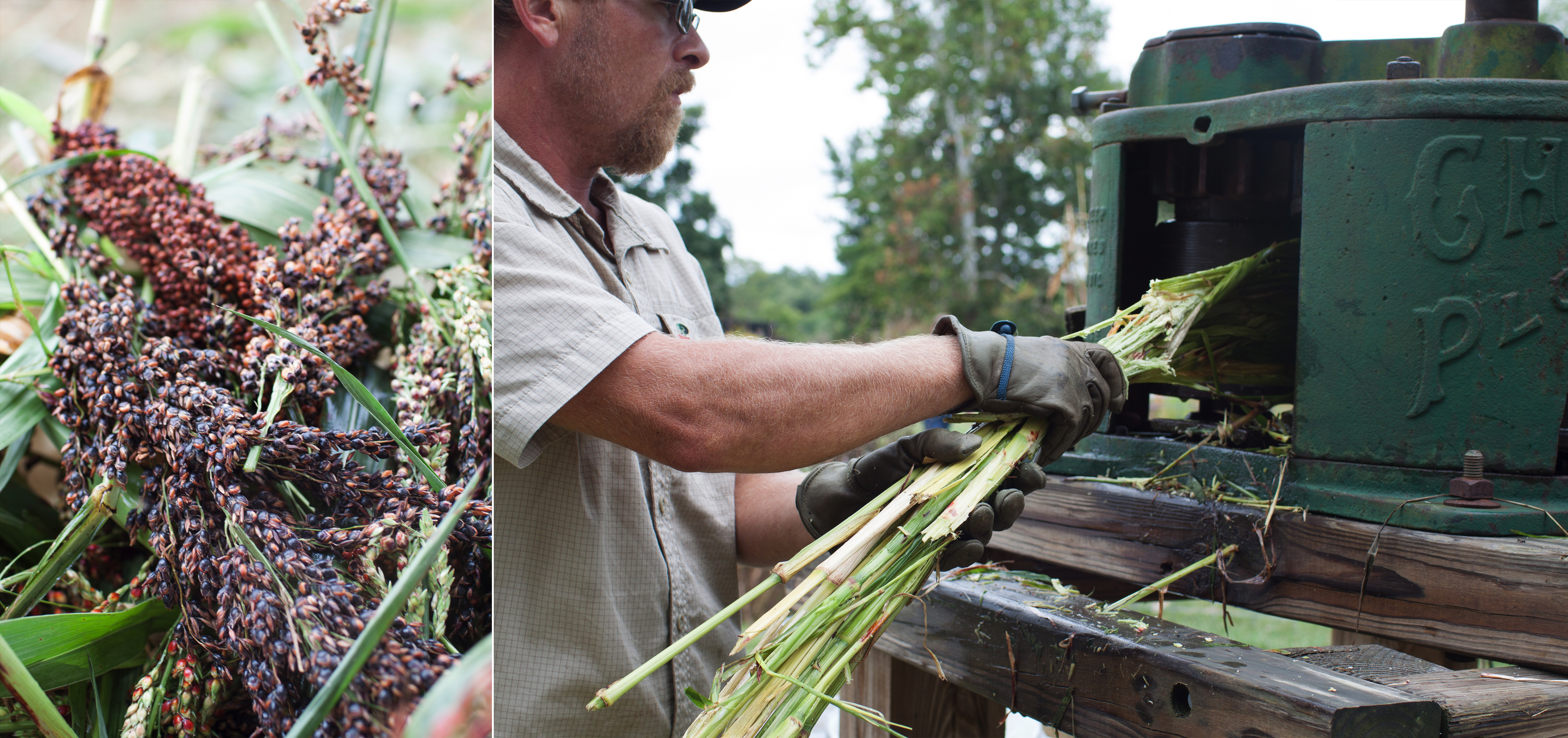
Sorghum being pressed at Shaker Village. What’s the difference between sorghum and molasses? Sorghum syrup comes from sorghum cane, and molasses comes from sugar cane.
Sorghum is a heat tolerant crop that does not require much water, making it the ideal plant to grow during the warmest part of the year. It does not originate in Kentucky, or even in the United States. It’s a cultivar of North Africa, making its way across the globe through ancient trading routes. The word Sorghum comes from the Latin words, “Syricum granum” or “Grain of Syria.”
In the United States, sorghum syrup has been used since the mid-1800s, but sorghum’s versatility was first made popular in the U.S. for its capacity in broom making! The Pleasant Hill Shakers relied on broom corn for their broom industry, and even cultivated sweet sorghum, making hundreds of gallons of sorghum syrup each year. The Pleasant Hill Shakers actually intercropped sorghum among young orchards, cultivating their orchards with annual crops as a way to increase food output in the years leading up to fruit production.
Apple trees and peach trees were planted at the same time, along with annual crops like sorghum, oats, even potatoes. After a few years when peach trees began to fruit, the annual crop planting would discontinue. Years later when the apple trees began producing, peach trees would be thinned from the orchard. Agriculture records indicate that the Pleasant Hill Shakers kept over 50 varieties of apple trees on their property!
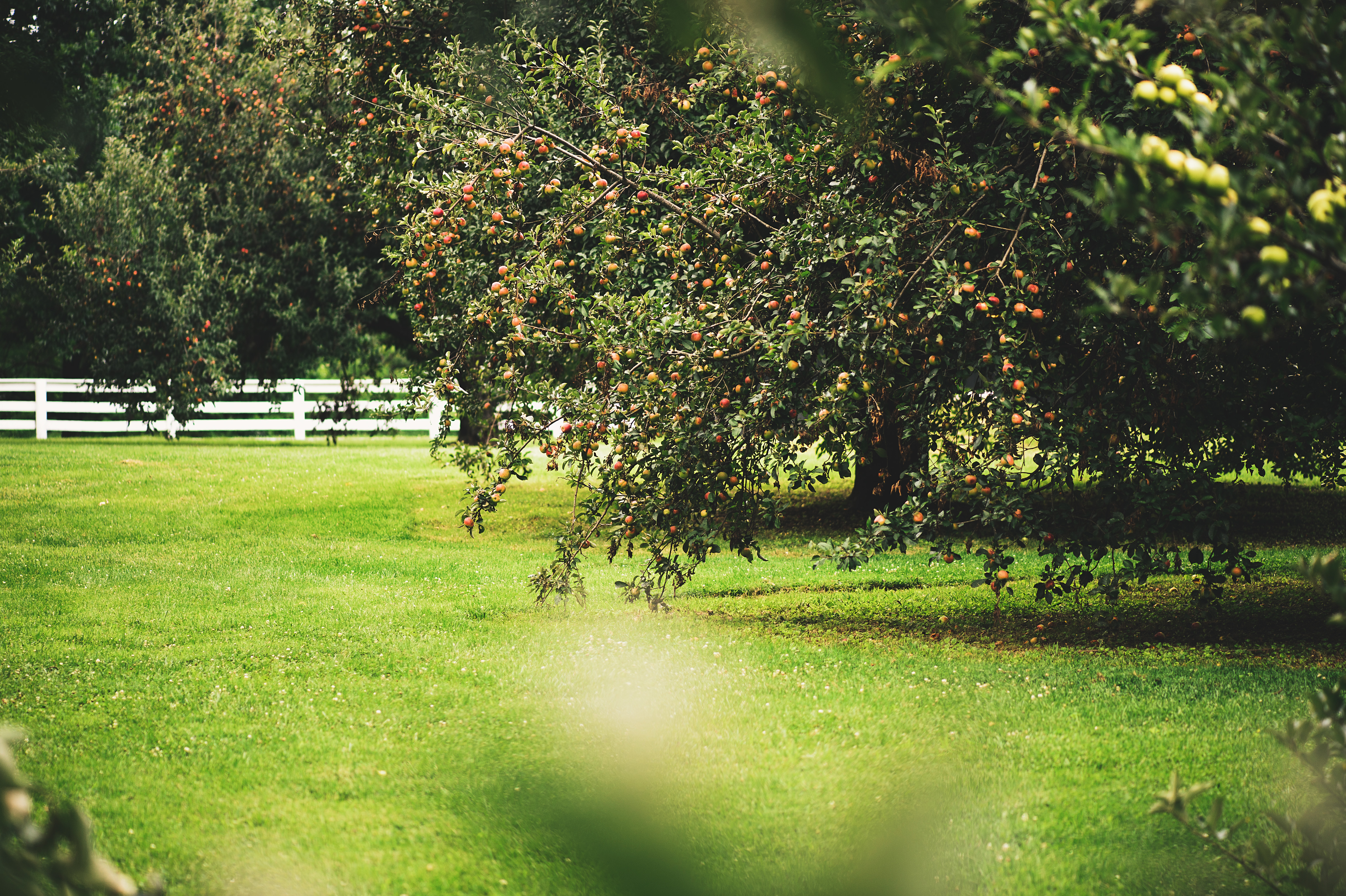
Today, Shaker Village grows ten heirloom varieties known for their versatility and unique flavors. These varieties will fruit at different times from June-October. Some varieties, like the Yellow Transparent, are best known for their drying potential. Others, like the King David, are best for cider or to eat fresh. You can see The Orchard as soon as you drive onto our property. Come taste one of these varieties and see what you think!
The Shakers believed that the products of their harvest were gifts from God to be counted as blessings. Because the Shakers treated their crops as a blessing from God, it was sacrilege to waste any part of the harvest. We strive to emulate the Shaker practice of reducing waste by maintaining a closed loop energy system at the farm. All of the food in our garden is harvested for the restaurant, and anything the restaurant cannot use is sent back to the farm. These scraps are fed to the animals working in our deep litter compost pen, which eventually returns as energy rich soil back into the garden.
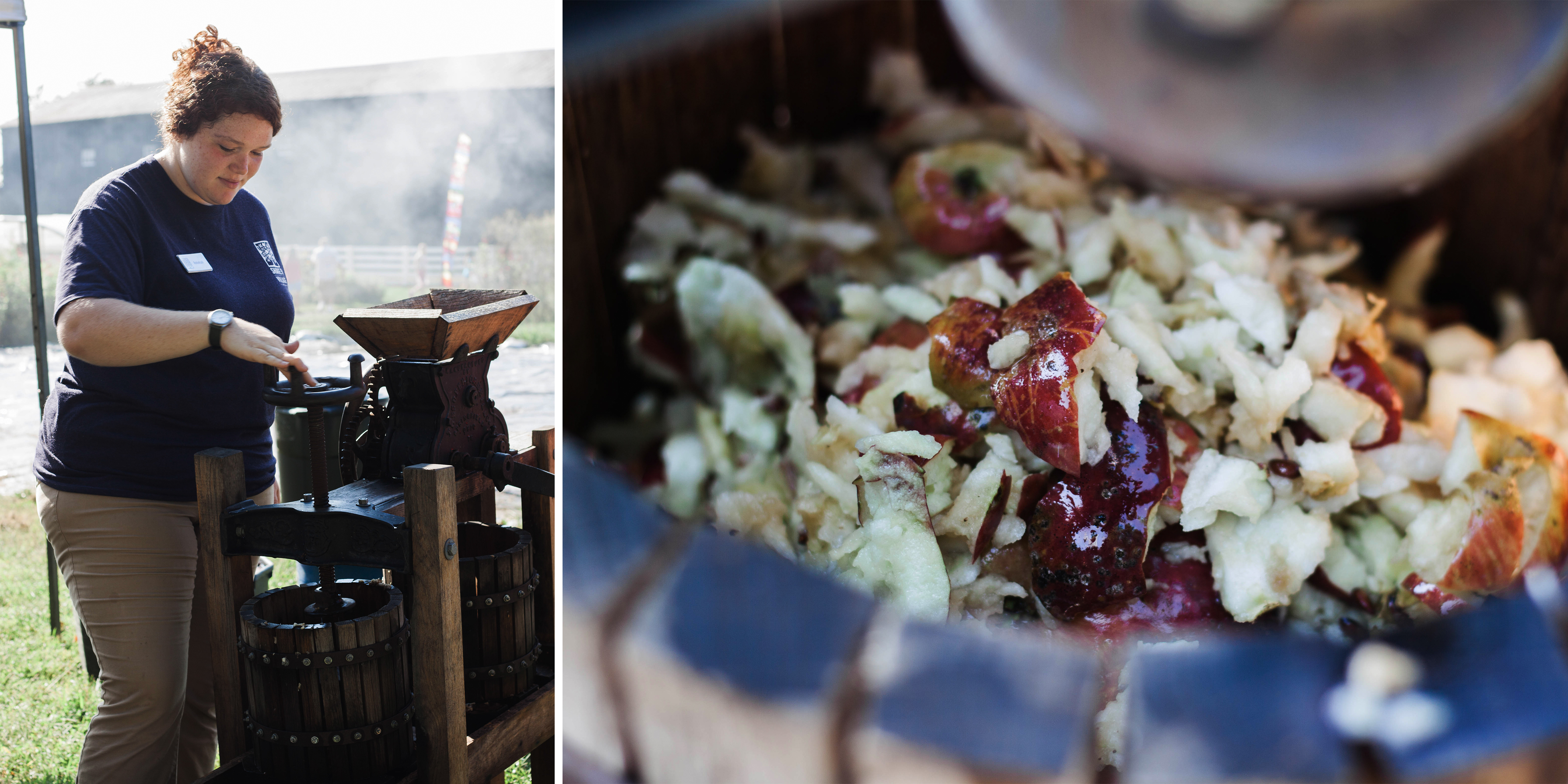
Celebrate Fall at Shaker Village to participate in these activities. Join us at HarvestFest on September 29 + 30 as we transform apples into cider using our heirloom orchard apples on a 19thcentury cider press. (Stick around for a demonstration on making hard cider as well!) Then, sample sorghum syrup from our horse powered sorghum press cooked down into that deliciously sticky syrup we’ve come to know as a part of harvest time here in Kentucky. Now all we need is a good homemade biscuit… wonder what the Trustees’ Table is cooking up?
Prefer to taste a little more? Check out our Hard Cider Bash on September 8. This Fresh Food Adventure highlights a menu of delicious ingredients from our orchard and garden and, of course, hard cider!
Bekah Roberts, Farm Program Specialist
